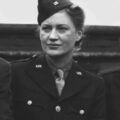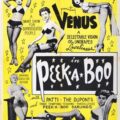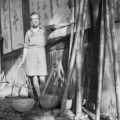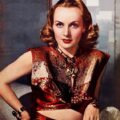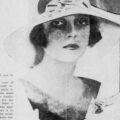Artistic photographers – Man Ray
February 15, 2019A beautiful, tragic pair of women’s eyes framed by a fan of mascaraed lashes weeps huge, perfectly round tears. A woman’s back is emphasised by superimposed black violin scrolls. Black and white are reversed in an image, so another woman’s pupils, hair and lips are white, while her face is strangely dark. These artistic images are the work of Man Ray, and are the photographs most closely associated with the Dada and Surrealist artist.
Photography
Although his chief medium was photography, and he made so many images of women, it’s a surprise to find out that among his artistic oeuvre are hundreds and hundreds of fashion photographs. It was a side of his life that Man Ray preferred to keep on the down low, but for his bread and butter he worked for Harper’s Bazaar and other magazines and advertisers for twenty years.
The images he created, however dismissive he was of them, are just as compelling as his art work, and often explored the same themes of surrealism as well as being strong fashion compositions in their own right. “My works were designed to amuse, annoy, bewilder, mystify and inspire reflection,” he said, probably talking about his art but it goes just as well for his commercial work.

Man Ray, Larmes. Image via Pinterest.
Man Ray – Origin
The impressively Modernist sounding name came about more by fortuity than deliberate design. Man Ray was born Emmanuel Radnitzky on August 27, 1890, in Philadelphia Pennsylvania USA. His parents were Jewish Russian émigrés, his father being a tailor and his mother a seamstress who loved working with scraps of fabric to make beautiful pieces of patchwork. He had two brothers. At one point the family decided to change their surname because of anti-Semitic feelings where they lived, and his brother chose the simple “Ray”. Emmanuel had always been nicknamed “Manny”, and this he shortened to “Man”. When he became an artist he insisted he had never had any other name than Man Ray, and he also insisted that the whole thing was his name – not first name Man, second name Ray, no “Good Morning Mr Ray” or “Hi Man”, it was “Hello Man Ray” or nothing.
Education
His education at the Boy’s High School from 1904 to 1908 provided some artistic and mechanical training, and at the same time the young Man Ray went to galleries to educate himself by viewing old masters. He was offered a scholarship to study architecture, but insisted on being an artist instead. His family gave him a room in the house to use as a studio, although actually he was an indifferent painter, constantly copying various other artist’s styles but lacking any original touch or even above average technique. He took the odd class at the National Academy of Design and the Art Students League but failed to shine.
Modern Artists
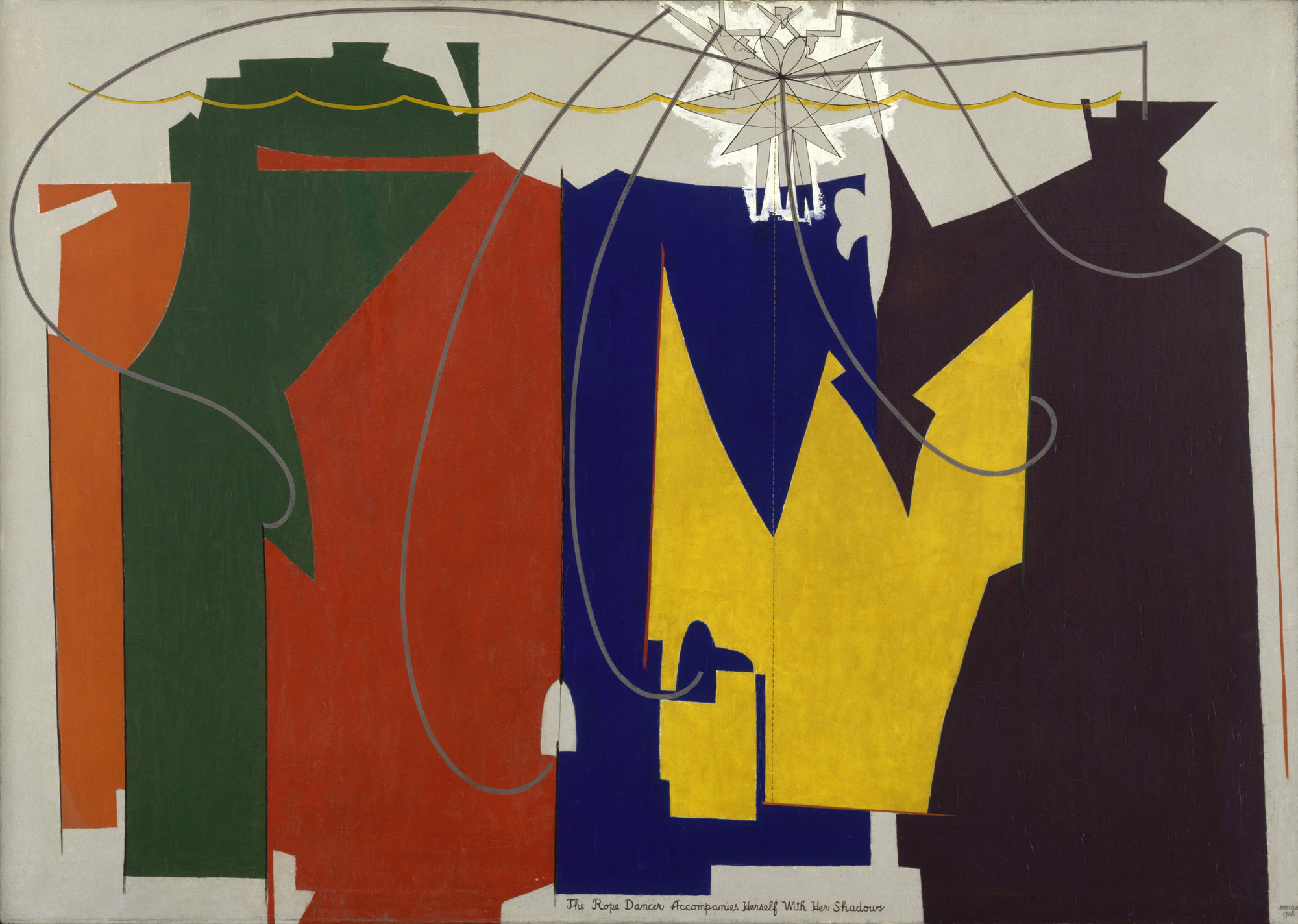
The Rope Dancer Accompanies Herself with her Shadows (1916). Image via MoMa.
Something needed to change. He already admired the works of modern artists but when at the age of 23 he met Marcel Duchamp suddenly it all clicked for him. He was then enrolled in the Ferrer School, and began feverishly making work. When he was 25 he got his first solo show and a year later he finally came up with a painting that critics agree was really original, called The Rope Dancer Accompanies Herself with Her Shadows (1916). The painting shows a dancer with different positions of her legs and skirts shown simultaneously. The year after that he made his first proto-Dada assemblage, and the year after that, in 1918, he produced his first significant photographs.
In 1914 he married the Belgian poet Adon Lacroix, but it didn’t last long.
Man Ray in Paris

Fashion photograph, 1925. Image via Pinterest.
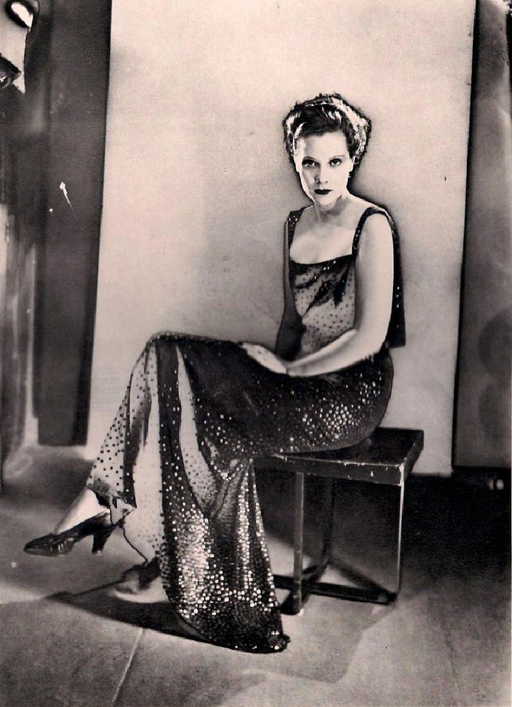
Man Ray fashion photograph. Image via live auctioneers.

Man Ray fashion photograph. Image via WordPress.

Man Ray fashion photograph, 1936. Image via Pinterest.

Coco Chanel, 1935. Image via Seele.
In 1921 Man Ray made his way to Paris, the centre of the artistic universe. There he immersed himself in the artistic life, and began taking fashion photographs to make money. His first commission was for Paul Poiret, and he photographed his collection.
He wanted ”Something different, not like the stuff turned out by the usual photographers.” Some of the photos were conventional, but when he posed the model next to a bronze Brancusi sculpture he knew he had it. The reflections from the artwork bathed the model in light. ”This was to be the picture, I decided; I’d combine art and fashion.”
Man Ray – Lovers and Influences

Ingre’s Violin, 1924 (posed by Kiki de Montparnasse). Image via Flickr.

Man Ray, Kiki with African mask. Image via Flickr.
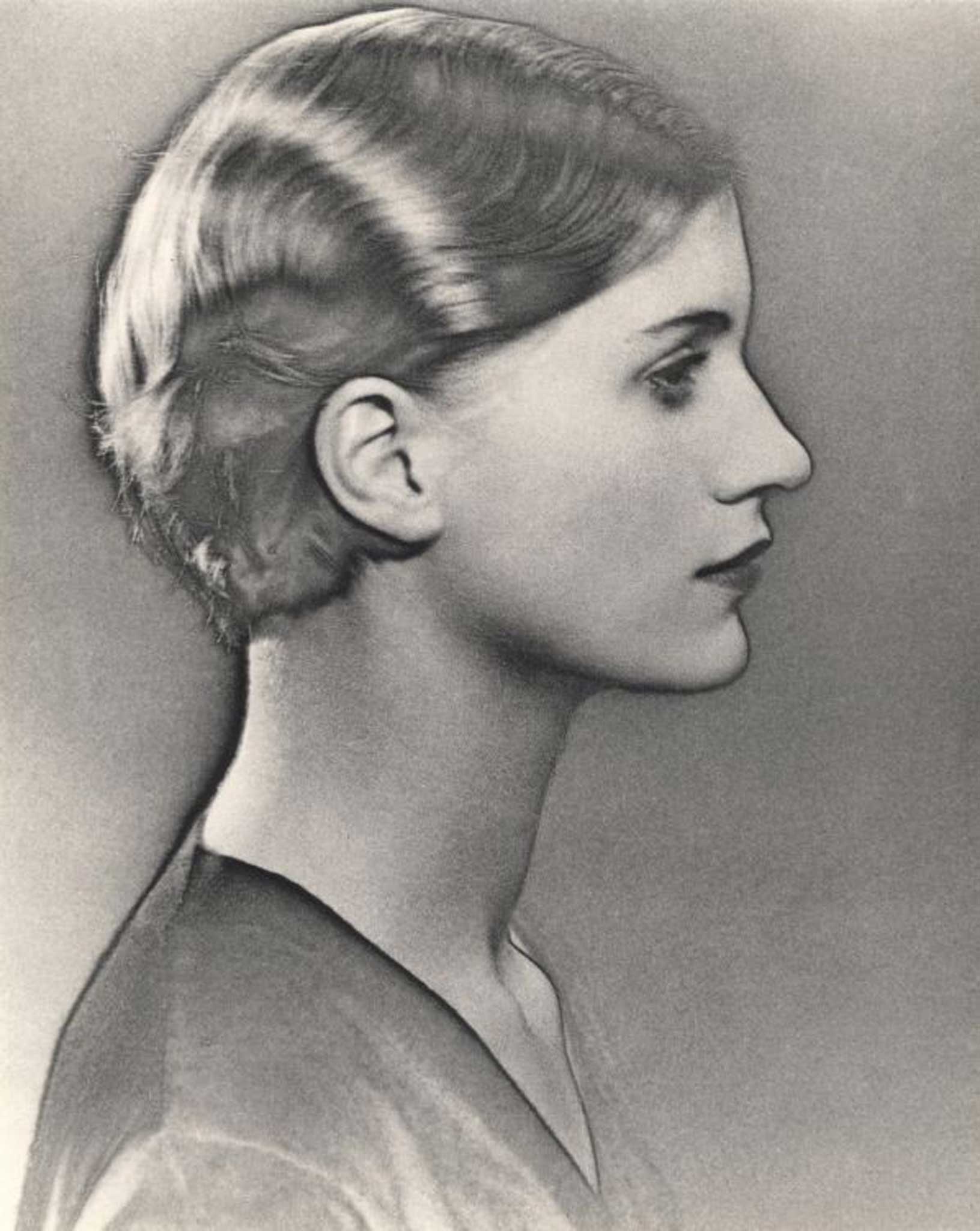
Lee Miller by Man Ray. Image via the Independent.
In Paris he had an affair with the very famous Kiki de Montparnasse (real name Alice Prin). A cabaret singer and artist’s model, Man Ray took many great photos of the wild and inspiring woman.
However, pretty soon Lee Miller turned up. Initially announcing she was there to be Man Ray’s student, the pair quickly became lovers and close collaborators. On learning that he had switched his affections, Kiki threw all the plates in the café they were in at Man Ray.
Lee Miller, a model and trained photographer, was a huge influence on Man Ray. Together they created many of his famous works, and developed what Man Ray called Rayograms as well as solarized photos, which produced an eerie effect of altering the black and white balance of the picture.
Man Ray – Surrealist Artwork

Man Ray for Elizabeth Arden 1932. Image via Pinterest.
In 1924 the poet André Breton founded the Surrealist movement. Subsequently Man Ray was included in the first Surrealist exhibition at Galerie Pierre in 1925 alongside Max Ernst, Joan Miro, Picasso and André Masson.
In the mean time he had become a successful portraitist as well as fashion photographer; eventually he was to capture Coco Chanel, Carmel Snow, and many socialites and artists.
He also took photos for advertising, working for Elizabeth Arden, Wrigleys, and other brands. In these, he often lends the unsettling themes of surrealism. Multiplied or isolated hands, eyes and lips often appear and give the adverts a very modern edge.
LA and Back

Man Ray, Juliet Browner, Max Ernst and Dorothea Tanning. Image via Pictify.
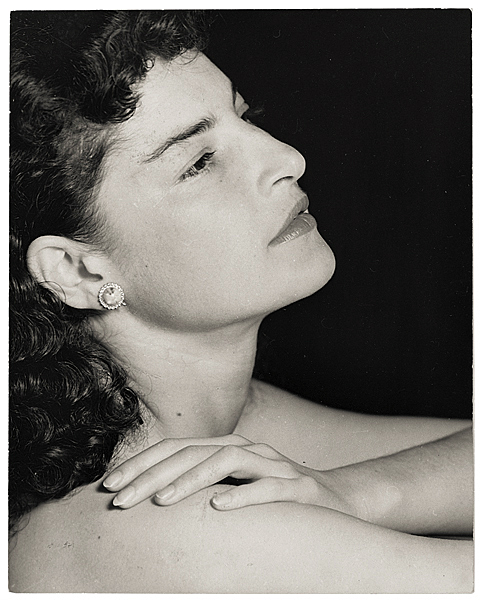
Juliet Browner. Image via Blogspot.
Man Ray escaped the second world war when it broke out and went to Los Angeles. He continued to work, and married a dancer and artist’s model called Juliet Browner in a double wedding with the artists Dorothea Tanning and Max Ernst in 1946. He returned to Paris as soon as he could, and rented a huge ruin of a building for a studio apartment.
Man Ray died in Paris in 1976. His works are in major collections world wide.




